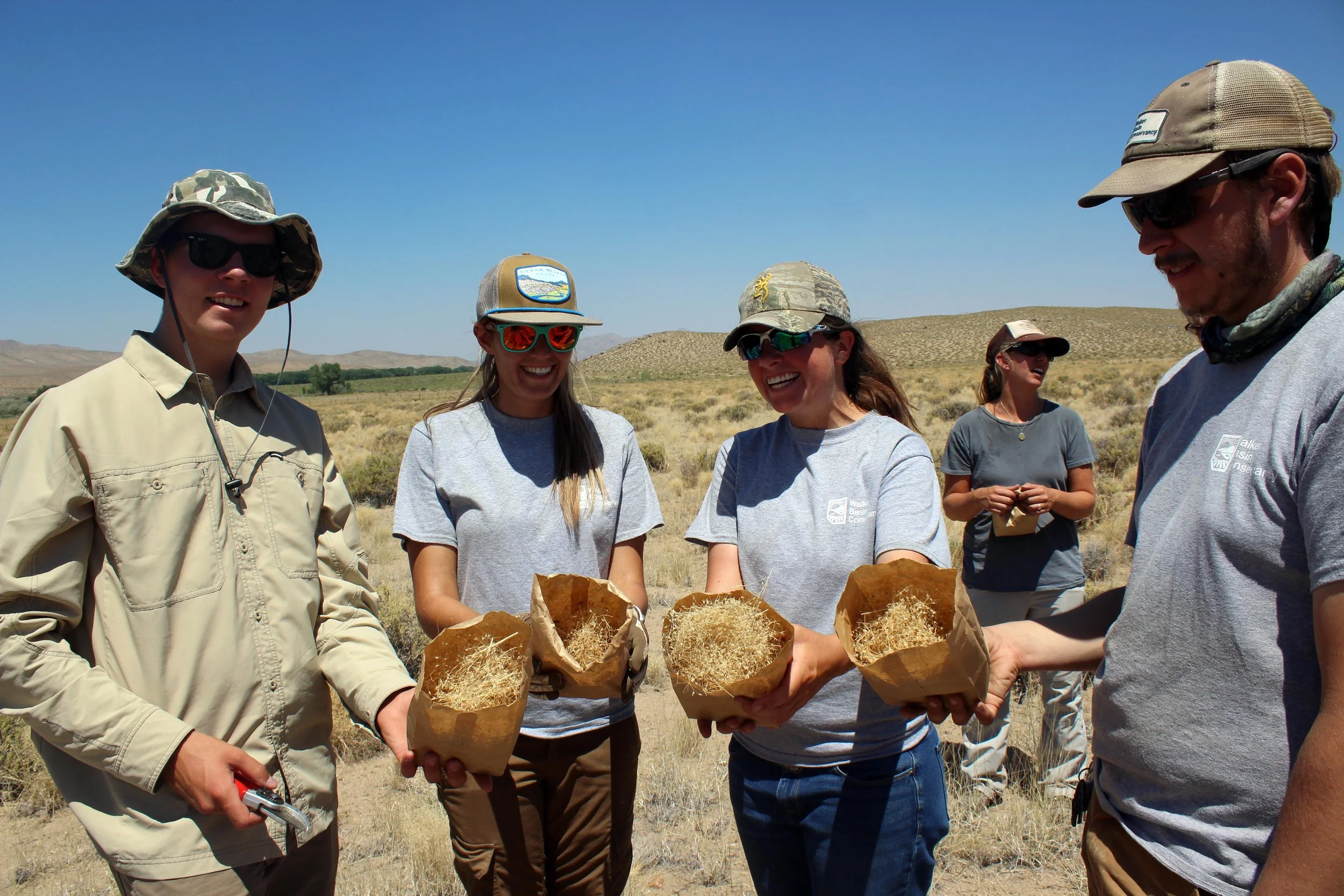Creating and Managing Our Own Supply Chain
One of the many challenges to cultivating resilient plant communities within the Walker Basin is a lack of native plant materials for restoration and rehabilitation projects. Taking a direct approach to this issue, the Conservancy manages its own plant materials supply chain through nursery and seed production operations in Mason Valley and Smith Valley. The Conservancy began our Native Seed Initiative in 2020 to improve outcomes for native seed increase and provide site-specific seed for Conservancy-led projects, as well as for partners and clients. Employees in our Nursery and Native Seed Initiative work hand-in-hand to collect, develop, and produce native plant materials for successful landscape-scale projects across the Walker Basin and beyond.
Our Goals
Develop our native seed farm to provide landscape-scale quantities of site-specific seed.
Support other agricultural producers and seed growers in the region to promote resilient agricultural communities.
Improve outcomes for native seed increase through application of agronomic principles.
Seed Collection
Learn More
Seed production begins with collecting site-specific seed from wildland populations. Wildland plant communities possess a diversity of genetic adaptations that make them resilient to local conditions and likely to outperform seed from areas that experience different environmental conditions. Our seed collectors are able to mobilize across the Great Basin and into the Sierra Nevada and Mojave regions. They follow national seed collection standards to select appropriate populations and capture genetic diversity without negatively impacting wild populations. The Conservancy currently has over 450 seed collections in storage from over 150 different species.
Testing Production Methods
Learn More
Like other agricultural producers, native seed growers can look to agronomic approaches to improve crop outcomes. Starting in 2020, the Conservancy has conducted field trials at the historic Sutter Ranch property in Smith Valley to test production methods on native grasses, shrubs, and wildflowers. To date, we have experimented with more than 30 different plant species. Thanks to partnerships with Nevada Dream Tags and the Bureau of Land Management's Plant Conservation and Restoration Program, we have established shrub orchards to grow seed for priority mule deer habitat and other key conservation initiatives.
Success Through Partnerships
Learn More
The limited availability of appropriate native seed for restoration after wildfire, for habitat improvement, mine rehabilitation, and other uses is a problem which the National Seed Strategy has outlined with steps needed to achieve necessary supplies of appropriate native seed. The Nevada Native Seed Partnership, composed of many federal and state agencies, NGOs, including Walker Basin Conservancy, and local tribes, is working to achieve these goals in Nevada and has drafted the Nevada Seed Strategy in order to guide action on this issue. Partnerships with the Bureau of Land Management and the Nevada Department of Wildlife, fellow NNSP members, have helped further our native seed production work.




